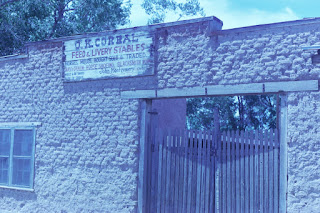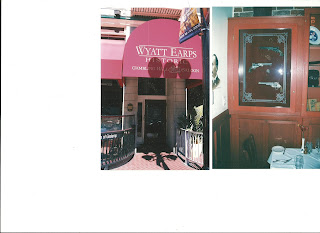The Nuremburg Bombing Mission WWII - English Bombers Lancasters, Halifaxes and the American B-17s
During the war, the British Bomber Command, under the direction of "Bomber" Harris, conducted a raid on Nuremberg, Germany. An extraordinary number of Halifax and Lancaster bombers were used in that raid. Both bombers could carry more than the American B-17 which was limited to 6,000 pounds of heavy weaponry.
Night raids left England at 2200 hours, and weather predicted heavy clouds over targets. They were wrong. By the time the flotilla were over Nuremberg, it was a crystal clear night, full moon, the English were swamped with German fighters and the bombers were dropping every few minutes.
The Germans were flying Fock Wolfes, Messerschmidt and Junker twin engine fighter planes, the best they had. Some of the fighters were loaded with machine guns and cannons. The Nazi's were well trained to fly under the bombers, pull up under the left wing and carefully shoot BETWEEN number one and two engine, into the wing, where they knew the fuel supply and other vital controls were located.
Gunfire at that point would instantly ignite the wing, travel to the aircraft body, and because of the English construction of their bodies, blow up the whole plane in the matter of a minute or two. The chances of the crew escaping was virtually nil. Other Lancaster crews were tasked to watch their fellow crewmen explode and count the chutes, if any, and the location of the misfortune.
That night, 800 British bombers left English and only half returned. The fuel lines of the Lancaster bombers were constructed along the sides of the aircraft from the wing tank inside the body of the airplane to the engine. One hit into the body, and it exploded.
The Nazi fighter pilots had special machine guns loaded into their fighter planes shooting nearly straight up. Their tactics were fly about 200 meters (about 100 yards) below the bomber, below the left wing, sight in the area of the left wing. Then, turn on the special machine guns that shot straight up, and blew-e.
In most cases, the Lancaster crew never knew what hit them, they never saw the German fighter plane that shot them down. They were in, fired their guns at night, blew them up, and were gone.
The Lancaster bombers, like the American B -17, had a tail gunner, but the German fighters could approach the bomber from a point undetected at night. BUT, the Lancaster had no Ball Turret Gunner, unlike the American B-17 which had a man down there with a couple of twin .50 caliber machine guns.
In the B-17, the Ball Turret gunner acquitted himself with those twin 50s more than enough times to earn his lunch and a couple of drinks when he got back to his base. If the British had thought to install their own ball turret in their Lancaster, there might be more Englishmen around today.
The American B-17 was well thought of during WWII, because of it's toughness. I know many of the pilots still alive today in their late 80's. Those guys brought back B-17's shot up, engines gone, wing tips gone, sliced in half, tails hanging by a thread - and they still got it back. The 17 was a real work horse. Many an American is alive today because the German fighter pilot could NOT knock that bomber out of the sky.
###
Night raids left England at 2200 hours, and weather predicted heavy clouds over targets. They were wrong. By the time the flotilla were over Nuremberg, it was a crystal clear night, full moon, the English were swamped with German fighters and the bombers were dropping every few minutes.
The Germans were flying Fock Wolfes, Messerschmidt and Junker twin engine fighter planes, the best they had. Some of the fighters were loaded with machine guns and cannons. The Nazi's were well trained to fly under the bombers, pull up under the left wing and carefully shoot BETWEEN number one and two engine, into the wing, where they knew the fuel supply and other vital controls were located.
Gunfire at that point would instantly ignite the wing, travel to the aircraft body, and because of the English construction of their bodies, blow up the whole plane in the matter of a minute or two. The chances of the crew escaping was virtually nil. Other Lancaster crews were tasked to watch their fellow crewmen explode and count the chutes, if any, and the location of the misfortune.
That night, 800 British bombers left English and only half returned. The fuel lines of the Lancaster bombers were constructed along the sides of the aircraft from the wing tank inside the body of the airplane to the engine. One hit into the body, and it exploded.
The Nazi fighter pilots had special machine guns loaded into their fighter planes shooting nearly straight up. Their tactics were fly about 200 meters (about 100 yards) below the bomber, below the left wing, sight in the area of the left wing. Then, turn on the special machine guns that shot straight up, and blew-e.
In most cases, the Lancaster crew never knew what hit them, they never saw the German fighter plane that shot them down. They were in, fired their guns at night, blew them up, and were gone.
The Lancaster bombers, like the American B -17, had a tail gunner, but the German fighters could approach the bomber from a point undetected at night. BUT, the Lancaster had no Ball Turret Gunner, unlike the American B-17 which had a man down there with a couple of twin .50 caliber machine guns.
In the B-17, the Ball Turret gunner acquitted himself with those twin 50s more than enough times to earn his lunch and a couple of drinks when he got back to his base. If the British had thought to install their own ball turret in their Lancaster, there might be more Englishmen around today.
The American B-17 was well thought of during WWII, because of it's toughness. I know many of the pilots still alive today in their late 80's. Those guys brought back B-17's shot up, engines gone, wing tips gone, sliced in half, tails hanging by a thread - and they still got it back. The 17 was a real work horse. Many an American is alive today because the German fighter pilot could NOT knock that bomber out of the sky.
###


Comments
Post a Comment